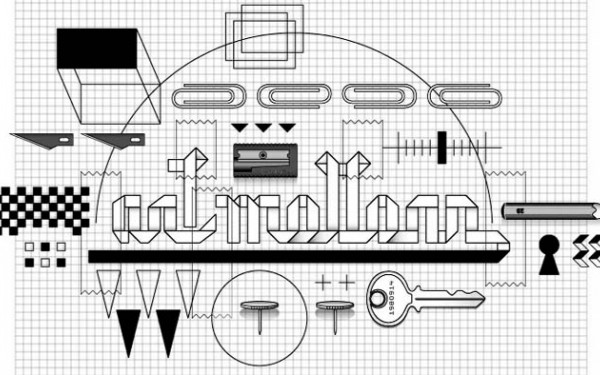Curating the Art Matters Festival
A Look at What Goes Into the Concordia Undergrad Art Festival
You walk into the gallery, in all its white-walled glory.
Your shoes tapping against the hardwood floors produce a loud, almost obnoxious sound as you make your way from one piece to another. People stand in silent contemplation—a classic, pleasing, but dull means of receiving art.
This March, ten Concordia students will strive to extend beyond such an ordinary experience and to bridge the gap between participants and installations when they curate this year’s edition of the Art Matters festival.
Art Matters, a Concordia-based festival that started in 2000, is a culmination of undergrad effort to organize several unique exhibitions throughout Montreal. Planning for the festival starts months in advance. A team of people from the artistic community, including Dean of Fine Arts Rebecca Duclos, selected this year’s student curators in October 2016, according to Art Matters coordinator Michael Martini.
The festival has had a longstanding mandate of diversity, as it places focus on making space for underrepresented communities—such as artists of colour, as well as queer and trans artists.
Coming from various artistic backgrounds such as literature, music, theatre, and performance, the student curators will have the opportunity to learn what goes into making an art show, sift through submitted works and negotiate with galleries throughout Montreal.
On Jan. 13, the selected students were invited to the Leonard and Bina Ellen Gallery for a conversational workshop to discuss what exactly it means to curate an art exhibit with the gallery’s own art connoisseurs, Michèle Theriault and Katrie Chagnon.
Curation facilitates the coming-together of any works of art that share a space. How an installation develops is influenced by the limits—or lack thereof—set by the curator. The difference between a purely cerebral, physical, or inarticulate experience is adjusted according to the established settings.
For Diana Lazzaro and Valerie Bourdon, two curators with backgrounds in electroacoustics, selecting submissions is just one of a few components to planning the shows. Electroacoustics as an art form is new to Art Matters this year—and with its integration has come new challenges.
Bourdon explained that with sound, an installation is even more immersive than through purely visual stimuli. With that however, the issue of matching space to sound arises.
“A lot of galleries aren’t sonically isolated. They don’t have the space that permits more than one or two compositions,” explained Lazzaro.
Unlike a soundscape or an ambient sound, “the acousmatic works are time-based, in the sense that it works within a short time period,” she said. “It’s hard to integrate these kinds of works into a space where people can walk in and out.” Displaying multiple works in the same room one after another isn’t ideal, either.
Bourdon and Lazzaro’s collaborative exhibit—which will premiere at Studio XX—will touch upon the interaction between technology and nature.
While many curators find the assembly of pieces to be difficult, pairing art works imparts more freedom than pieces of literature, according to Xan Shian, another curator.
Shian wants to form a context without words to explore the “nature and being of anxiety.” This would not be a remake of the Ryan Trecartin installation exhibited at the MAC this summer, resonant with post-structuralist despair and angst. Shian would like participants present at her installation to feel more hopeful, not overwhelmed by pure anxiety. She expressed a clear interest in its “reprieve, its antithesis”—there may be room for some catharsis.
An experience with art should transforms itself over time, explained Samuel Normand, a painting and drawing student at Concordia who has a background in theatre.
Curation facilitates the coming-together of any works of art that share a space.
In the hopes to “dissolve the boundaries between pieces,” Normand’s vision for his March exhibit is to fuse installations together to create something “more organic,” he said, deconstructing the typical way in which viewers tend to experience each art pieces in an exhibition.
Normand has operated with this intent for some time. The liberty that students have in university to take risks and challenge the status quo, while working under the pressure to succeed academically, has been conducive to his experimental approach.
Soukayna, a curator with a background in classical arts and theatre, would also like to facilitate experimentation in the hopes of creating discourse. “Art history has not been inclusive,” she said at the workshop last Friday.
She also mentionned that it’s common to limit art to an aesthetic exchange rather than consider it as a vehicle for socio-political change.
Soukayna’s love of mise en scène within theatre has carried over to her work at the festival. By focusing the spotlight on artists of marginalized identities, she hopes that the space that will generate dialogue. Whatever is exposed will draw a person away from an insular experience with art to become one that is more critical and social.
Art Matters is still in its formative stage. While exhibitions won’t begin until March, you can read up on the curators in the meantime on the FringeBlog on The Link’s website, where we’ll be profiling the selected curators in the weeks leading up to the festival.

2_900_549_90.jpg)
_600_832_s.png)


5__600_375_90_s_c1.jpg)
__600_375_90_s_c1.jpg)
_600_375_90_s_c1.jpg)